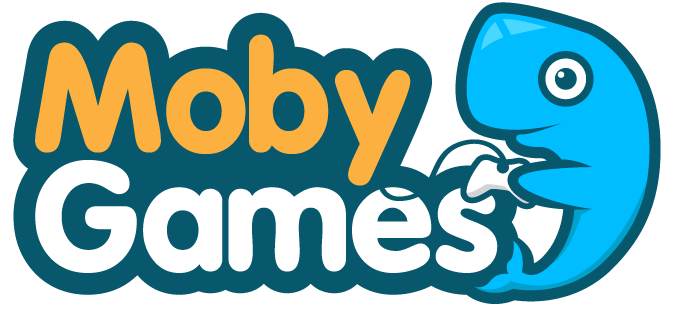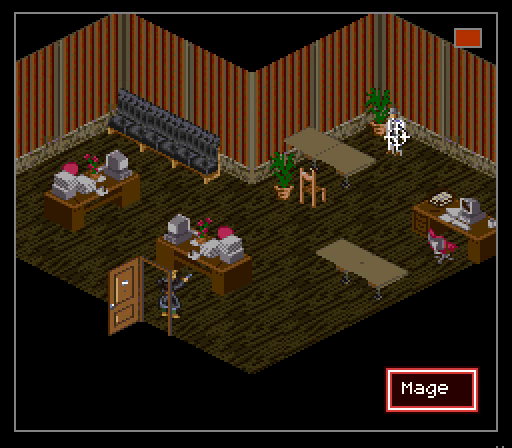Shadowrun (JP)
| |
Player's Review
The game is loosely based on the novel Never Deal with a Dragon by Shadowrun co-creator Robert N. Charrette and set in the year 2050. The player takes on the role of Jake Armitage, a man suffering from amnesia after having been critically wounded by assassins. The plot then follows Jake as he attempts to uncover his own identity and the identity of the mysterious figure who wants him dead, and eventually complete his mission. Shadowrun Returns links the stories of this game and of Shadowrun for the Sega Genesis.
Shadowrun is a cyberpunk-fantasy action role-playing video game for the SNES, adapted from the tabletop role-playing game Shadowrun by FASA. The video game was developed by Australian company Beam Software and first released in 1993 by Data East.
A project to adapt Shadowrun for the SNES had a turbulent history between 1989 and 1993, including having been halted in mid-development before being resumed in late 1992 under a tight deadline. Its eventual lead designer was Paul Kidd, creator of Nightshade, elements and a feel of which he then carried on to Shadowrun. The game was a critical success, winning a number of industry awards, but was a commercial failure nevertheless. It was retrospectively acclaimed by several publications as an "ahead of its time" milestone in the history of the role-playing genre for the consoles and credited for having pioneered "film noir" style in video games.
The ROM image of the prototype version of Shadowrun contains a much more crude script, with more sexually suggestive and violent language. The game's distributor favored the less serious version for retail release, sparking indignation and conflict among Kidd and other members of Beam's staff. Kidd recalled: "Beam Software was a madhouse, a cesspit of bad karma and evil vibes. The war was reaching shooting level; old school creators who just wanted to make good games were being crushed down by a wave of managerial bull. It was no longer a 'creative partnership' in any way; it was 'us' and 'them'. People were feeling creatively and emotionally divorced from their projects." Shadowrun was ultimately completed by its deadline. Kidd credits this to the staffers abstaining from company meetings and workshops, and continually keeping management away from the designers.
Shadowrun was released in North America and Japan by Data East. In PAL regions, it was self-published by Beam Software as Laser Beam Entertainment. The 1994 Japanese version has a significantly longer introduction sequence than the English version of the game and also has a vertically uncompressed Shadowrun logo on the title screen. The ending of Japanese version also contains additional messages and animations, but at the same time does not show most messages in the ending's nightmare sequence. It uses the same script as the North American and PAL editions, just with Japanese subtitles. The Japanese version has minor differences in menus, it uses additional sound effects, and also dialogue options disappear more often, making some messages that were present in the US version inaccessible or easier to miss. Choosing a dialogue option in the Japanese version does not close the Ask About window, which makes this part of the game a lot less tedious. Equipment in the Japanese version cannot be sold until you buy a replacement, which means you either have to keep your original weapon and armor and never sell them, or upgrade your equipment at a slower rate. This also means the Zip-Gun is inaccessible unless you play without picking up the Beretta all the way until Caryards. The vampire boss doesn't respawn after going through the Bremerton exit portal, making it harder for the player to gain Nuyen and Karma. Two fights ( one in the Tower, and one in the Volcano ) are made easier by removing one enemy from their group. A text error about non-existent sixth floor in one of the Matrix data files was fixed. The Japanese version also does not use the L and R buttons, making it impossible to immediately pick up or examine items. An error in the US version makes the Bulletproof Vest item unavailable in shops, the Japanese version has no such error. The Japanese version has the secret hub room, but it cannot be accessed with in-game means, so this room is only shown in the playthrough of the US version. When exiting this room through an invisible door at the bottom center of the screen, a message saying "ADIOS!" appears.
I have missed a couple things in my longplay of the US version, but I show them in the Japanese version, so I decided to not re-record the video. The Japanese version is better anyway. However, there are some rare scripted events in the game that show gang members being attacked on the streets, and those scenes were shown in the USA version, but when recording the Japanese version, I did not get them. I did get one, but half of it happened off-screen because I was too far away.
Shadowrun is a cyberpunk-fantasy action role-playing video game for the SNES, adapted from the tabletop role-playing game Shadowrun by FASA. The video game was developed by Australian company Beam Software and first released in 1993 by Data East.
A project to adapt Shadowrun for the SNES had a turbulent history between 1989 and 1993, including having been halted in mid-development before being resumed in late 1992 under a tight deadline. Its eventual lead designer was Paul Kidd, creator of Nightshade, elements and a feel of which he then carried on to Shadowrun. The game was a critical success, winning a number of industry awards, but was a commercial failure nevertheless. It was retrospectively acclaimed by several publications as an "ahead of its time" milestone in the history of the role-playing genre for the consoles and credited for having pioneered "film noir" style in video games.
The ROM image of the prototype version of Shadowrun contains a much more crude script, with more sexually suggestive and violent language. The game's distributor favored the less serious version for retail release, sparking indignation and conflict among Kidd and other members of Beam's staff. Kidd recalled: "Beam Software was a madhouse, a cesspit of bad karma and evil vibes. The war was reaching shooting level; old school creators who just wanted to make good games were being crushed down by a wave of managerial bull. It was no longer a 'creative partnership' in any way; it was 'us' and 'them'. People were feeling creatively and emotionally divorced from their projects." Shadowrun was ultimately completed by its deadline. Kidd credits this to the staffers abstaining from company meetings and workshops, and continually keeping management away from the designers.
Shadowrun was released in North America and Japan by Data East. In PAL regions, it was self-published by Beam Software as Laser Beam Entertainment. The 1994 Japanese version has a significantly longer introduction sequence than the English version of the game and also has a vertically uncompressed Shadowrun logo on the title screen. The ending of Japanese version also contains additional messages and animations, but at the same time does not show most messages in the ending's nightmare sequence. It uses the same script as the North American and PAL editions, just with Japanese subtitles. The Japanese version has minor differences in menus, it uses additional sound effects, and also dialogue options disappear more often, making some messages that were present in the US version inaccessible or easier to miss. Choosing a dialogue option in the Japanese version does not close the Ask About window, which makes this part of the game a lot less tedious. Equipment in the Japanese version cannot be sold until you buy a replacement, which means you either have to keep your original weapon and armor and never sell them, or upgrade your equipment at a slower rate. This also means the Zip-Gun is inaccessible unless you play without picking up the Beretta all the way until Caryards. The vampire boss doesn't respawn after going through the Bremerton exit portal, making it harder for the player to gain Nuyen and Karma. Two fights ( one in the Tower, and one in the Volcano ) are made easier by removing one enemy from their group. A text error about non-existent sixth floor in one of the Matrix data files was fixed. The Japanese version also does not use the L and R buttons, making it impossible to immediately pick up or examine items. An error in the US version makes the Bulletproof Vest item unavailable in shops, the Japanese version has no such error. The Japanese version has the secret hub room, but it cannot be accessed with in-game means, so this room is only shown in the playthrough of the US version. When exiting this room through an invisible door at the bottom center of the screen, a message saying "ADIOS!" appears.
I have missed a couple things in my longplay of the US version, but I show them in the Japanese version, so I decided to not re-record the video. The Japanese version is better anyway. However, there are some rare scripted events in the game that show gang members being attacked on the streets, and those scenes were shown in the USA version, but when recording the Japanese version, I did not get them. I did get one, but half of it happened off-screen because I was too far away.


 We are still waiting on a suitable Amiga AGA emulator with robust recording features before tackling such games.
We are still waiting on a suitable Amiga AGA emulator with robust recording features before tackling such games.



No Comments have been Posted.